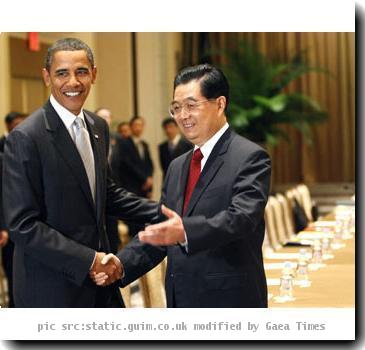Indian president makes rare state visit to China amid trade disputes, border tensions
By Christopher Bodeen, APThursday, May 27, 2010
Indian president makes rare state visit to China
BEIJING — Indian President Pratibha Patil sought to soothe trade disputes and recent border tensions in meetings Thursday with Chinese leaders in Beijing.
Patil is the first Indian head of state in a decade to visit her country’s giant neighbor, an illustration of how ties remain cool almost 50 years after the two countries fought a brief border war.
In their meeting, Chinese President Hu Jintao told Patil her visit would boost “mutual understanding and friendship and advance the development of the China-India strategic partnership,” state broadcaster CCTV reported.
Hu said the two sides should utilize both bilateral and multilateral forums to increase cooperation and coordination, a nod to the common cause found at last year’s climate change talks in Copenhagen where they united to resist a push by industrialized nations to reach a new legally binding treaty.
China and India have also sought common stances on global finance and other international issues as the two largest of the so-called BRIC nations, which also include Russia and Brazil.
CCTV quoted Patil as saying she hoped for “harmonious, friendly, energetic, and constantly developing relations.”
Patil met also with Premier Wen Jiabao and attended a signing ceremony for a number of bilateral agreements, details of which were not immediately available.
Patil’s six-day visit will also take her to the India pavilion at the World Expo in Shanghai and to the central city of Luoyang, where she will attend a temple ceremony commemorating the arrival of Buddhism from India 2,000 years ago.
Such exchanges mark a push to strengthen ties between the two countries beset by mutual suspicion and a sharpening rivalry over resources and global markets to fuel their surging economies.
Indians frequently complain about a flood of Chinese products that account for about two-thirds of bilateral trade, which grew by about 33 percent in 2008 to nearly $52 billion, but declined by as much as $10 billion last year amid disputes and the global economic slowdown.
Citing safety concerns, India last year issued a six-month ban on Chinese toys that dominate the local market, and launched investigations into other Chinese products ranging from steel to pharmaceuticals.
In April, New Delhi also banned telecom equipment from Chinese vendors such as Huawei and ZTE, citing national security concerns. The ban came less than a week after media reports that Chinese hackers had broken into the computer networks of India’s security, defense and diplomatic establishments.
The most glaring disagreement remains the remote, mountainous China-India border, over which the two fought gun battles in 1962. The two lack even a commonly designated line of control, despite 13 rounds of settlement talks, and India recently beefed up its military presence along the frontier following accusations of increasing incursions by Chinese troops.
China, meanwhile, resents the presence in India of the self-declared Tibetan government-in-exile headed by the Himalayan region’s Buddhist leader, the Dalai Lama, who fled across the border during an abortive rising against Chinese rule in 1959.
Beijing last year angrily protested a weeklong visit by the Dalai Lama to the northeastern Indian state of Arunachal Pradesh, which it claims is Chinese territory. China, meanwhile, occupies a part of Kashmir claimed by India.
Tags: Asia, Beijing, China, Contracts And Orders, East Asia, Greater China, Hu Jintao, India, International Trade, South Asia, Territorial Disputes

